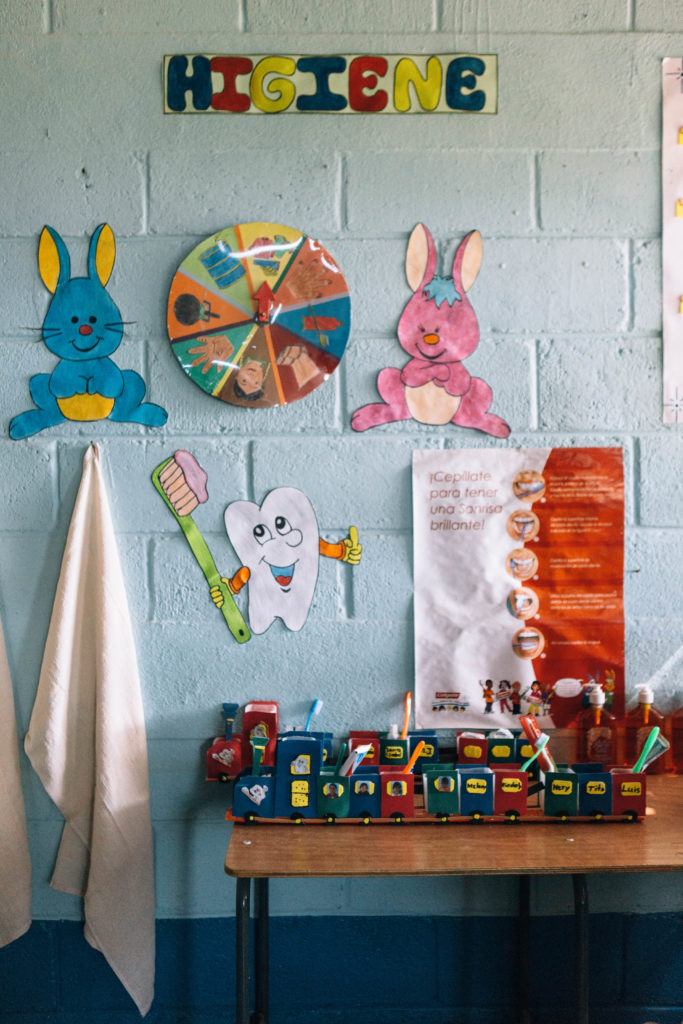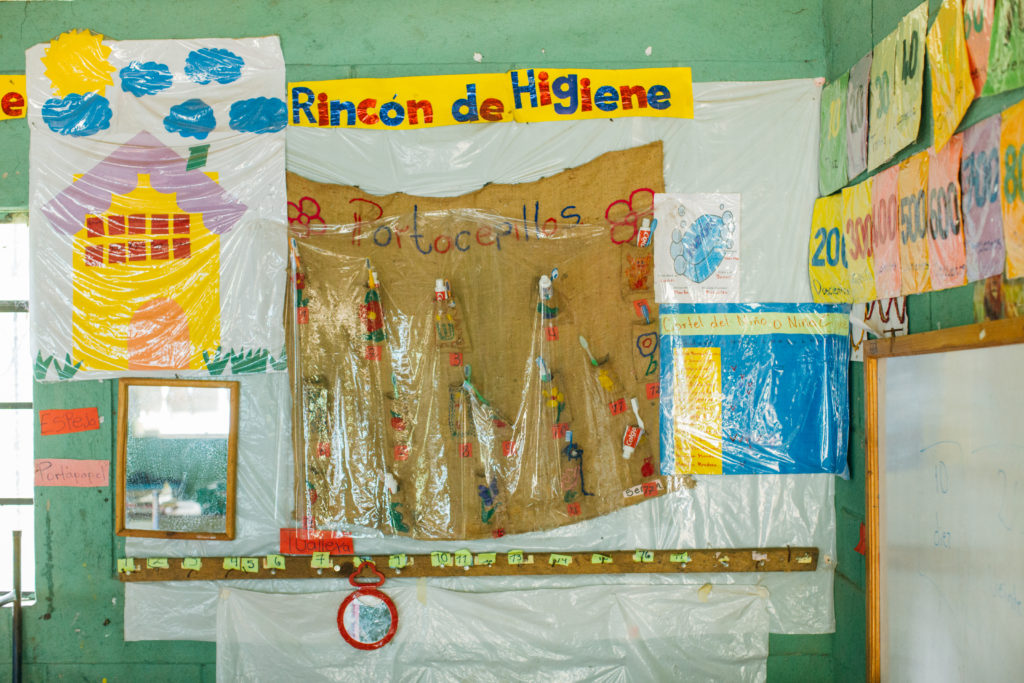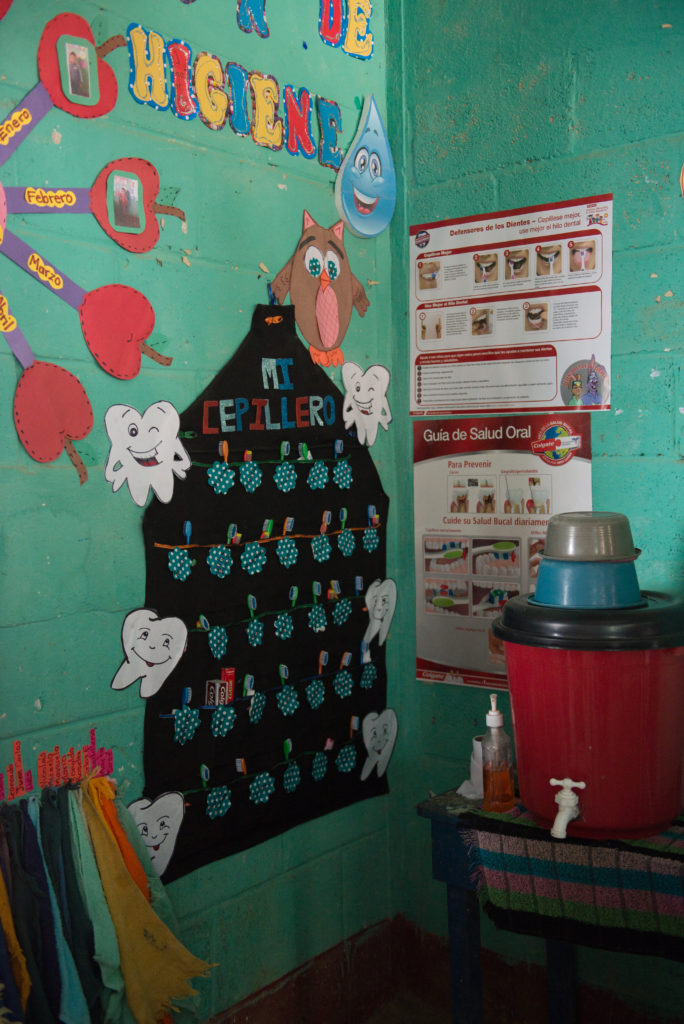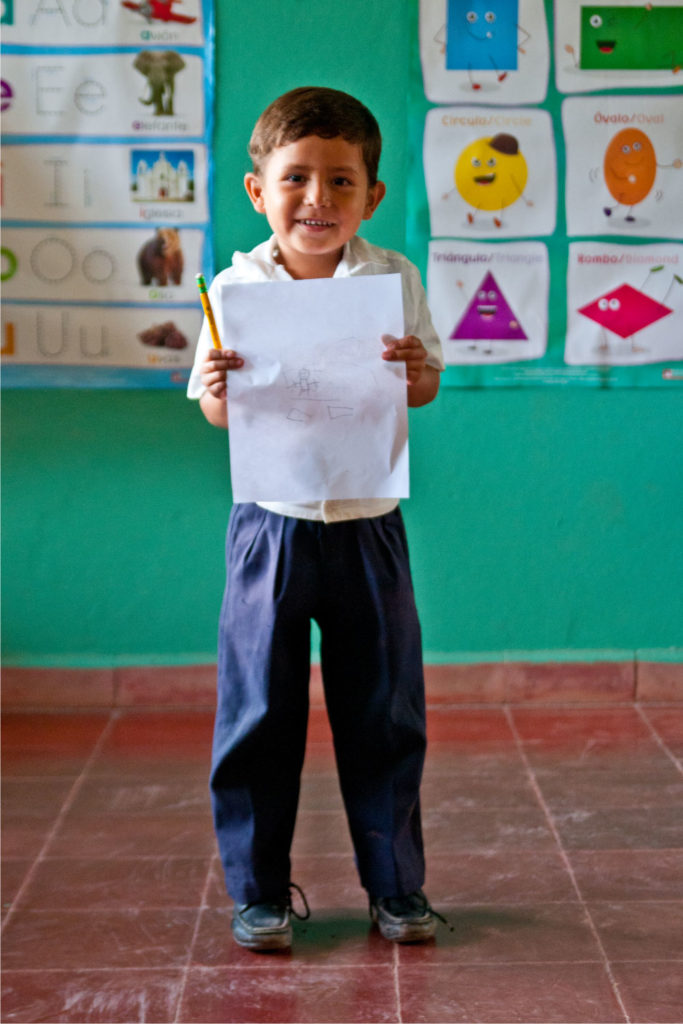La comunidad de Pachoj, en Guatemala, se encuentra a 24 kilómetros del pueblo más cercano y es difícil llegar a ella. En temporada de lluvias, la caminata hasta este pequeño pueblo puede incluir más de un kilómetro por caminos lodosos que a menudo se vuelven intransitables para los vehículos. Debido a la dificultad de acceso, Pachoj carece de servicios básicos como agua potable, saneamiento y electricidad.
A pesar de esta falta de infraestructura, un miembro de la comunidad estaba decidido a fundar una escuela en Pachoj. Y cuando Cristian Misael López empezó a trabajar con la agencia local de desarrollo guatemalteca para construir aulas para sus 37 alumnos en 2016, también se aseguró de priorizar las instalaciones de agua y saneamiento.
“Antes de la construcción de las instalaciones de agua y saneamiento, los niños defecaban al aire libre”, afirma Cristian. “Consumían agua contaminada y no cuidaban su higiene”.
Cristian trabajó con Water For People y una agencia de desarrollo local para cambiar estas realidades para sus estudiantes. Su pequeña escuela pudo construir sanitarios y estaciones para lavarse las manos, así como aprender a tratar las aguas residuales. Pero tan importante como estas nuevas instalaciones fue el plan de estudios que Cristian y otros profesores incorporaron para asegurarse de que los estudiantes comprendieran la importancia de utilizar las instalaciones.
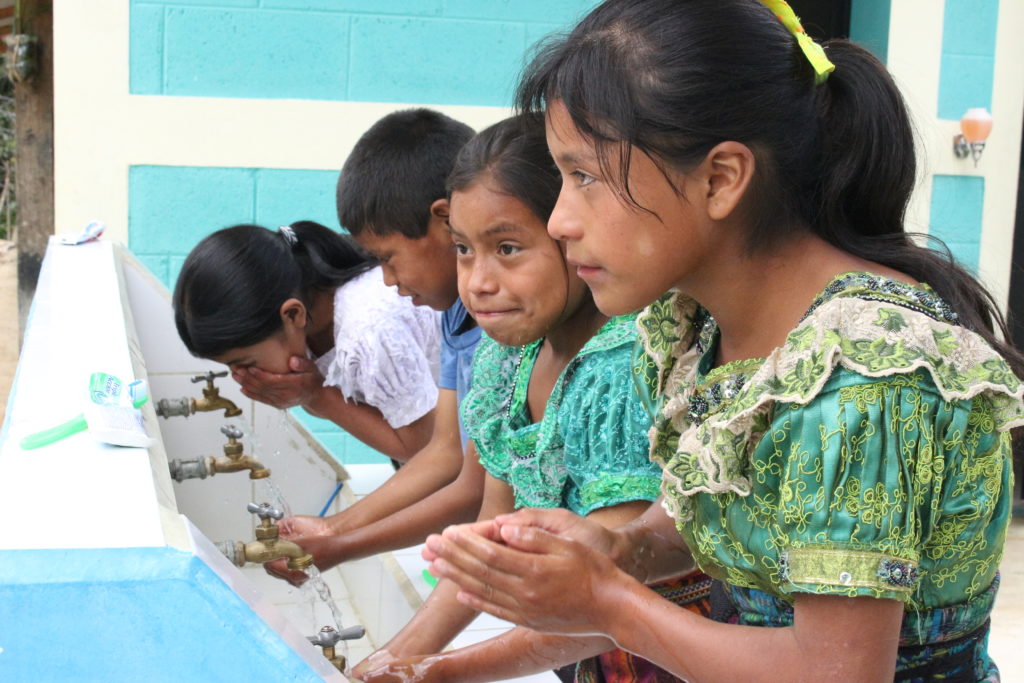
“Con la formación que nos brindaron nos enseñaron a abordar la educación en higiene de una forma lúdica, innovadora y creativa”, comenta Cristian.
Uno de los métodos que utiliza la escuela son los Rincones de Higiene, un lugar en cada aula dedicado a aprender sobre prácticas de higiene saludables.
Los Rincones de Higiene incluyen recursos para recordar a los estudiantes la importancia de los hábitos de higiene. Además de guardar cepillos de dientes, jabón, toallas y cortaúñas, los rincones incluyen una rueda de higiene con dibujos de hábitos de higiene: lavarse las manos, cepillarse los dientes, peinarse, cortarse las uñas, etc. Varios días a la semana, el profesor pide a los estudiantes que giren la rueda para determinar qué hábito de higiene abordarán en clase ese día.
“Con los Rincones de Higiene hemos ayudado a mejorar la higiene de los alumnos, lo que ha mejorado su autoestima e incluso les ha ayudado a evitar el acoso escolar”, afirma Cristian.
Cristian dice que las nuevas instalaciones han disminuido las ausencias en la escuela y los estudiantes rápidamente comenzaron a venir a la escuela con mejores hábitos de higiene, como lavarse las manos antes de comer y después de usar el baño.
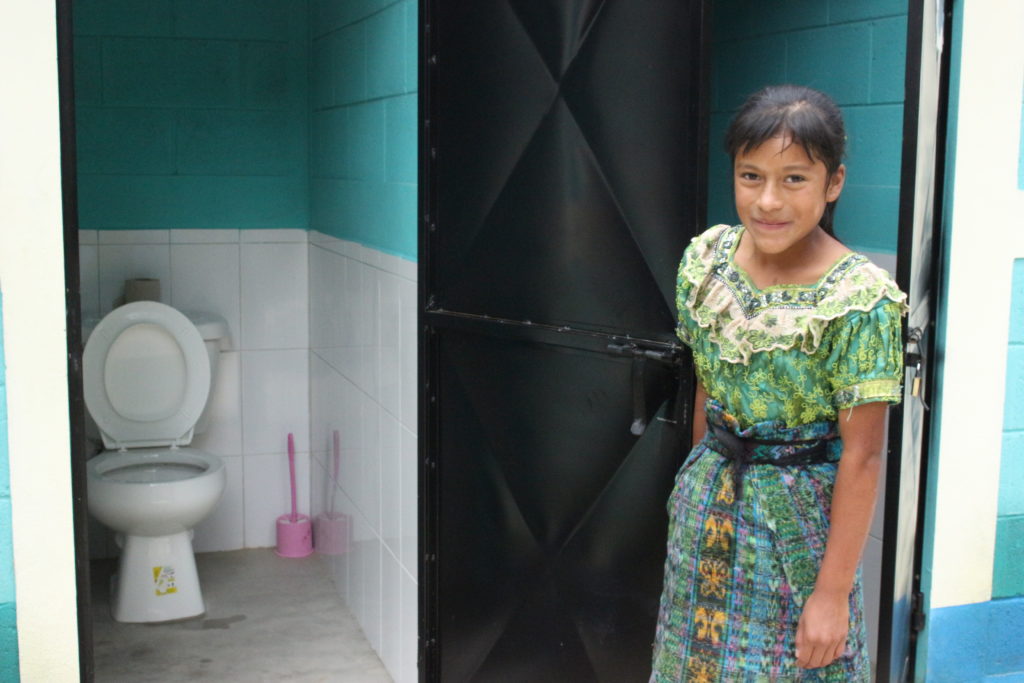
Marta es una alumna de quinto grado de la escuela y, aunque le da vergüenza hablar, está segura del impacto de los cambios en su escuela. "Me gusta mucho cómo está mi escuela ahora. He aprendido a usar el baño, a mantenerme limpia y por qué es importante lavarse las manos", dice. Antes, Marta dice que a menudo tenía dolor de estómago por beber agua contaminada, pero ahora los dolores de estómago han desaparecido.
"Hablo con mi mamá sobre todo lo que pasa en la escuela y lo que nos enseñan los maestros", dice Marta. Esto ha impulsado a su madre a practicar hábitos de higiene más seguros, como usar el inodoro de la casa y hervir el agua para asegurarse de que sea potable.
"Antes, la escuela no me gustaba tanto", dice Marta. "Ahora me siento feliz porque se ve bonita y está muy limpia".
Incluso en los rincones más lejanos y de difícil acceso de Guatemala, estudiantes como Marta ahora pueden contar con acceso a agua y saneamiento confiables, y están promoviendo la importancia de estos nuevos servicios entre sus familias y su comunidad, ayudando a garantizar que el agua y el saneamiento estén disponibles y se utilicen para siempre.

